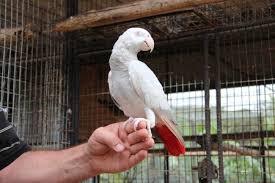African Grey Parrot Alex, The African Grey Parrot is renowned for its intelligence and remarkable mimicry skills, but one parrot, in particular, changed the way scientists and the public understand avian cognition—African Grey Parrot Alex. Born in 1976 and studied extensively by animal psychologist Dr. Irene Pepperberg, Alex became a global symbol of animal intelligence and emotional depth.
Who Was African Grey Parrot Alex?
Alex, short for Avian Learning EXperiment, was an African Grey Parrot who spent most of his life in a research lab rather than a cage. Dr. Pepperberg adopted Alex from a pet store to demonstrate that birds, especially parrots, are far more intelligent than previously thought. At the time, mainstream science considered birds to be little more than instinct-driven creatures. Alex proved them wrong.
What Made Alex So Special?
Unlike most parrots who mimic words without context, Alex understood what he was saying. He could identify colors, shapes, materials, and quantities. For example, when shown a blue key and asked, “What color?”, he would respond “blue.” He even understood the concept of zero—an ability that even young children struggle with.
Alex had a vocabulary of over 100 words and could use them meaningfully. He could express desires, make requests (“I want banana”), and even show frustration or humor. His emotional intelligence was also notable. He often bonded closely with his human caregivers and could display affection or annoyance.
Scientific Breakthroughs with Alex
Dr. Pepperberg’s work with African Grey Parrot Alex revolutionized the field of animal cognition. Before Alex, the ability to use language meaningfully was believed to be uniquely human or limited to primates. Alex shattered this myth. He showed that birds are capable of abstract thinking, learning through observation, and even problem-solving.
Some of the cognitive tasks Alex mastered include:
- Distinguishing between “same” and “different”
- Counting up to six objects
- Identifying and combining adjectives and nouns correctly (e.g., “green wood” or “red key”)
- Demonstrating object permanence and cause-effect understanding
Alex’s Legacy
Alex died unexpectedly in 2007 at the age of 31. His final words to Dr. Pepperberg were, “You be good. See you tomorrow. I love you.”
His death marked a significant moment in the scientific community and animal lovers worldwide. But his legacy lives on—not just in the academic world but in the broader understanding of animal intelligence.
Thanks to Alex, the African Grey Parrot is no longer just seen as a talking pet, but as a creature with complex emotions, social needs, and intellectual capacity. Alex inspired deeper ethical questions about how we treat animals in captivity and research.
Conclusion
African Grey Parrot Alex was more than a research subject—he was a pioneer, a symbol of non-human intelligence, and a bridge between species. His life’s work still inspires animal behaviorists, educators, and pet lovers around the world.
You Might Also Like These:

